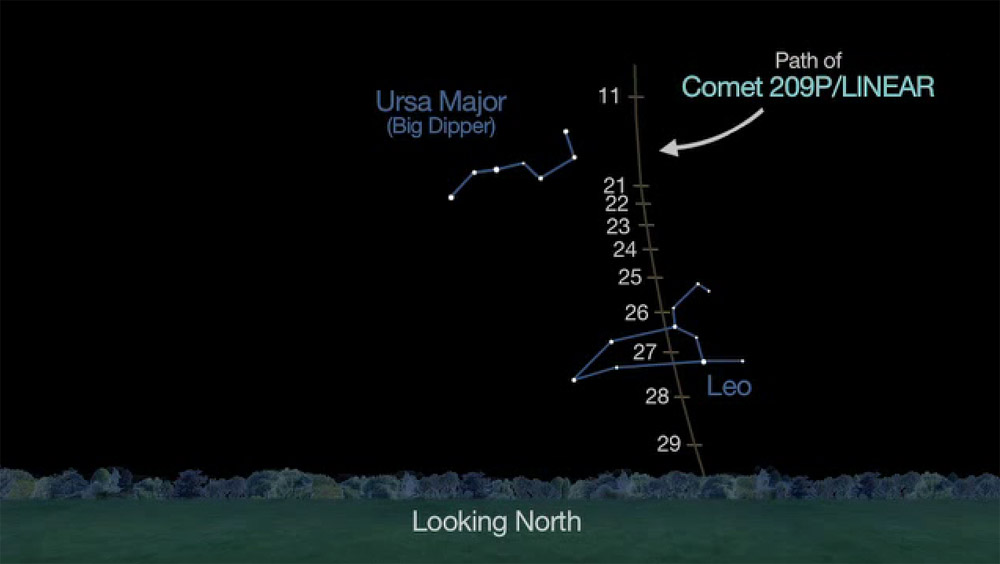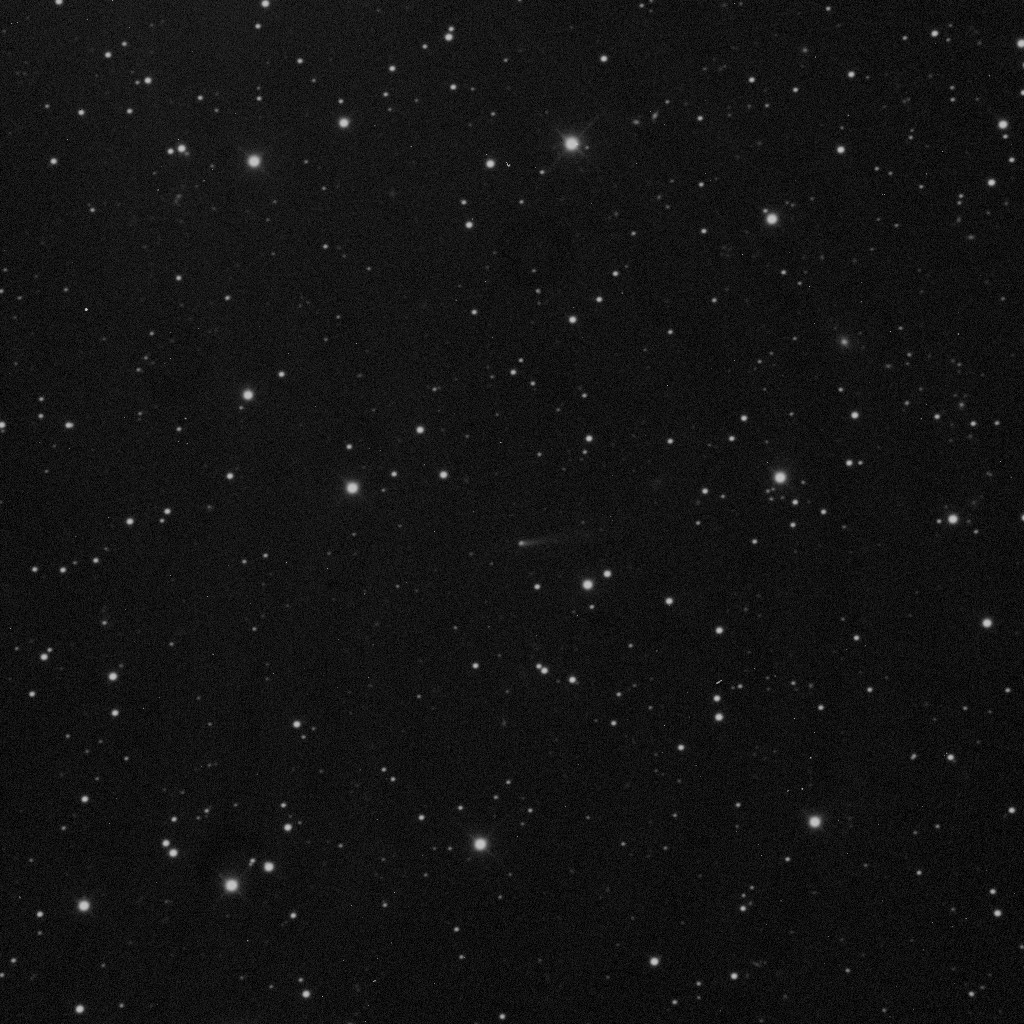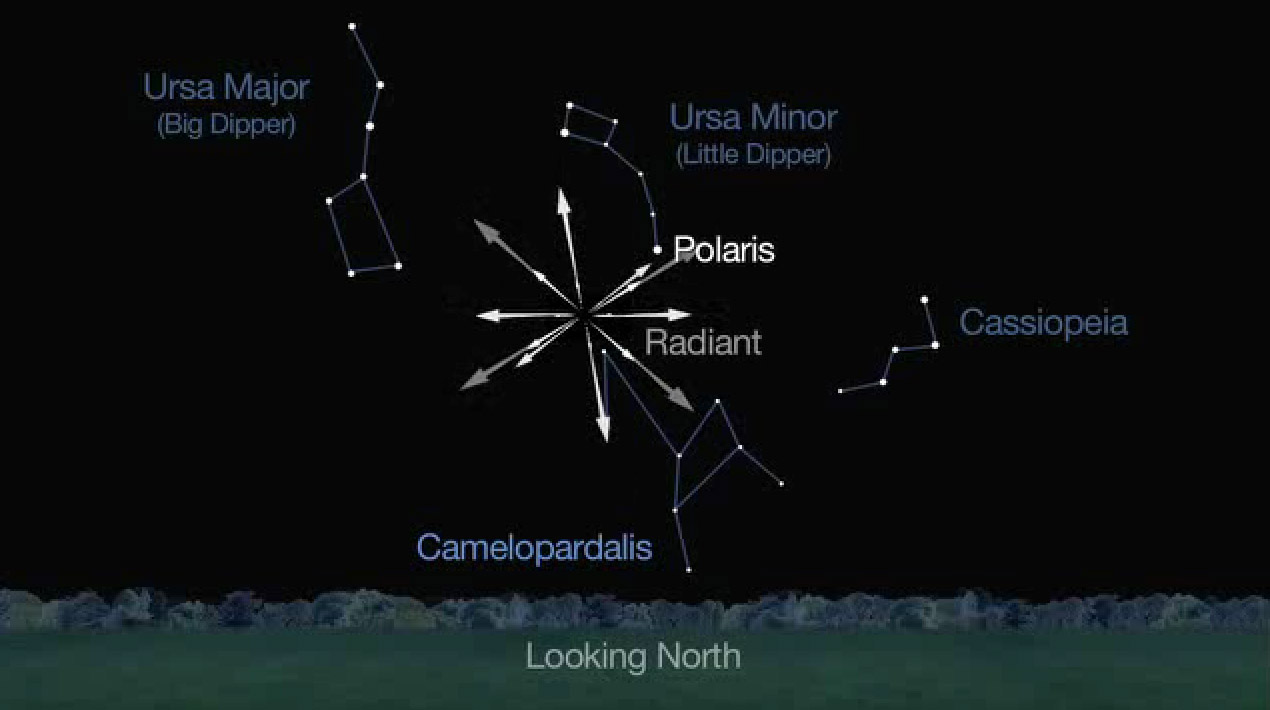New Meteor Shower from Comet Could Dazzle Stargazers Next Week

A new meteor shower spawned by a comet is due to light up the sky next week, with some forecasters predicting up to 200 "shooting stars" per hour — a potentially spectacular opening act for the meteor display.

If it performs as expected, the never-before-seen Camelopardalid meteor shower is due to peak overnight on May 23 and 24 as the Earth passes through a debris stream left by the Comet 209P/LINEAR nearly 200 years ago. The new meteor display could rival the brilliance of the annual Perseid meteor shower that graces the night sky each August.
The prospect of a brand-new meteor shower has scientists understandably excited.
"There could be a new meteor shower, and I want to see it with my own eyes," said NASA meteor expert Bill Cooke, head of the Meteoroid Environment Office at the Marshall Space Flight Center in Huntsville, Ala., in a statement. [New Meteor Shower from Comet 209P/LINEAR (Gallery)]
![Learn why famous meteor showers like the Perseids and Leonids occur every year [See the Full Infographic Here].](https://cdn.mos.cms.futurecdn.net/VDWEKQFLr8yuXkTL4YkHqj.jpg)
200-year-old comet leftovers
Meteor showers occur when the Earth passes through clouds of dust and gas left behind from comets as the planet orbits the sun. This gas and dust falls into Earth's atmosphere, where it burns up on its downward journey creating a meteor display. The amount of debris in space determines how much of a show the shower will present to observers.
In February 2004, the Lincoln Near-Earth Asteroid Research (LINEAR) team discovered Comet 209P/LINEAR. The relatively dim comet crosses Earth's orbit once every five years in its journey around the sun.
Get the Space.com Newsletter
Breaking space news, the latest updates on rocket launches, skywatching events and more!
Two years ago, in 2012 meteor experts Esko Lyytinen of Finland and Peter Jenniskens at NASA Ames Research Center determined that Earth would pass through debris from the comet this year. Material shed from the comet in the 1800s would encounter Earth on May 24, 2014.

How many "shooting stars"?
While experts agree that an encounter is imminent, no one is certain how much material lies waiting in space to create the new meteor shower. It depends on how active the faint comet was when it crossed Earth's path.
"We have no idea of what the comet was doing in the 1800s," Cooke said. "There could be a great meteor shower — or a complete dud."
The best time to watch is between 6 and 8 Universal Time on May 24, which translates to between 2 a.m. and 4 a.m. Eastern Daylight Time, when modelers say Earth is most likely to encounter the debris. North Americans will receive the best show because the peak occurs at night in that region, when the apparent source of the streams of gas will lie high in the sky.
"We expect these meteors to radiate from a point in Camelopardalis, also known as 'the giraffe,' a faint constellation near the North Star," Cooke said. "It will be up all night long for anyone who wishes to watch throughout the night."
Although the forecast calls for a two-hour encounter, avid watchers may wish to extend their viewing time to allow for potential surprises from the new meteor shower. Outbursts could occur in the hours before or after the event.
If the anticipated meteor shower fizzles out, observers will still be able to observe the tight conjunction of the crescent moon and Venus, which will rise together just ahead of the sun.
"That's a nice way to start the day, meteors or not," Cooke said.
Editor's Note: If you capture an amazing photo of the new meteor shower, or any other night sky view, that you'd like to share for a possible story or image gallery, please contact managing editor Tariq Malik at spacephotos@space.com.
This story was updated at 12:45 pm ET to correct the name of Comet 209P/LINEAR.
Follow us @Spacedotcom, Facebook and Google+. Original article on Space.com.
Join our Space Forums to keep talking space on the latest missions, night sky and more! And if you have a news tip, correction or comment, let us know at: community@space.com.

Nola Taylor Tillman is a contributing writer for Space.com. She loves all things space and astronomy-related, and enjoys the opportunity to learn more. She has a Bachelor’s degree in English and Astrophysics from Agnes Scott college and served as an intern at Sky & Telescope magazine. In her free time, she homeschools her four children. Follow her on Twitter at @NolaTRedd









